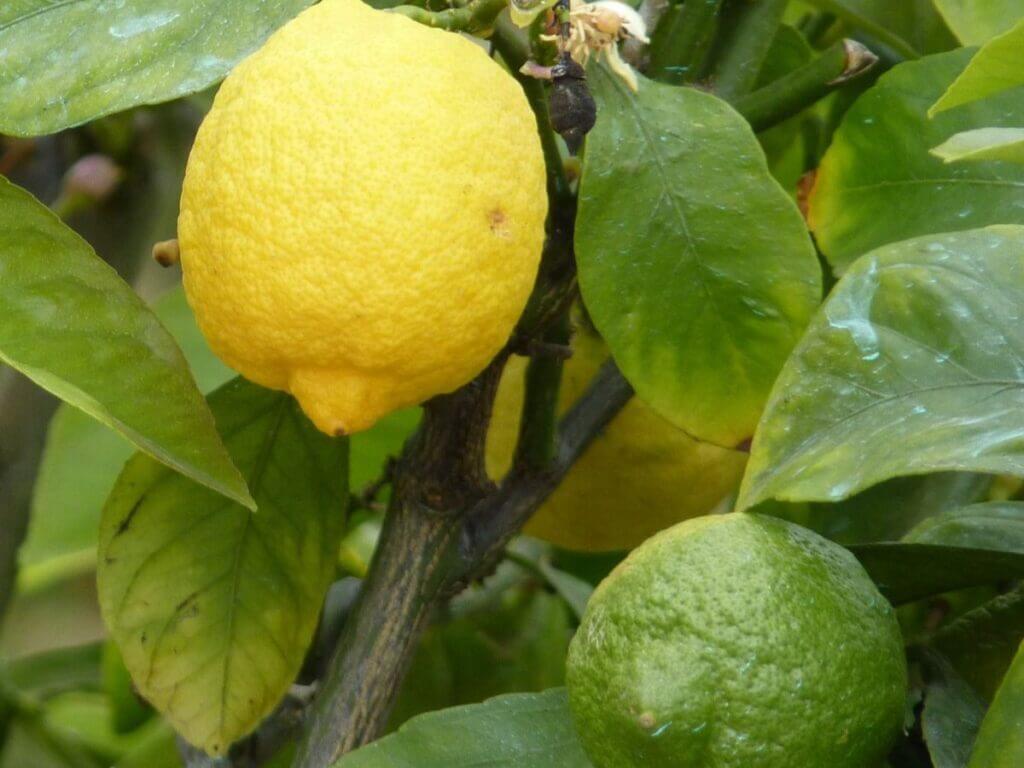How to Grow a Lemon Tree: A Guide for South African Gardeners
Lemon trees are more than just a source of tangy, nutritious fruits; they are a vibrant addition to any South African garden. Growing a lemon tree can be a rewarding experience, providing not only a bountiful harvest but also an aromatic presence and aesthetic appeal to your outdoor space. In this guide, we will explore the essential steps and tips on how to grow a lemon tree. Our journey starts with choosing the right variety and leads us through the entire process of planting, caring for, and harvesting from your lemon tree.
In South Africa’s diverse climates, growing a lemon tree requires some know-how and dedication. Lemon trees, with their lush green foliage and bright yellow fruits, can transform your garden into a slice of citrus paradise. Whether you are looking to add a new element to your garden or are a citrus enthusiast, understanding the nuances of how to grow a lemon tree will help you achieve a healthy and productive tree. Let’s uncover the secrets to cultivating these delightful trees in your own backyard.
Choosing the Right Lemon Tree Variety
When it comes to lemon trees, one size does not fit all, especially in the varied climates of South Africa. The key to a successful lemon harvest begins with selecting the right variety. Popular choices include the Eureka, Lisbon, and Meyer varieties, each with its unique characteristics. Eureka lemons are known for their year-round fruiting, while Lisbon lemons are prized for their cold tolerance. The Meyer lemon, a sweeter and less acidic variety, is ideal for milder climates and smaller gardens. It’s important to choose a variety that suits your local climate and soil conditions, which can be guided by resources like Plantinfo’s Citrus Species overview.
In addition to climate compatibility, disease resistance is a crucial factor. South African gardens can be prone to citrus diseases, making it essential to choose varieties that are resistant to common ailments. For instance, the Citrus Limon page on Plantinfo.co.za offers insights into disease-resistant lemon tree varieties. These cultivars have been bred to withstand common citrus diseases, ensuring a healthier tree and a more bountiful lemon harvest. By starting with a robust and suitable variety, you lay the foundation for a flourishing lemon tree in your garden.
Ideal Planting Conditions
Lemon trees thrive in well-draining, slightly acidic soil, making soil preparation a key step in the planting process. Good drainage is crucial to prevent root rot, so consider raising the planting area if your garden has heavy clay soil. Ample sunlight is another critical factor for lemon trees. They require at least six hours of direct sunlight daily to produce healthy fruit. The Plantland guide on growing lemon trees offers valuable advice on optimizing soil and sun exposure for your lemon tree.
When it comes to spacing, lemon trees need enough room to grow without competition from other plants. A spacing of about 4 to 6 meters between trees is ideal. This ensures adequate air circulation and sunlight penetration, which are vital for the tree’s health and fruit production. For those with limited space, lemon trees can be grown in containers, as detailed in this video guide on growing lemons in containers. Choose a large container with drainage holes and use a high-quality potting mix to ensure your lemon tree has the best start in its new home.
How to Plant a Lemon Tree
Planting a lemon tree is a straightforward process, but it requires attention to detail. The best time to plant lemon trees in South Africa is in the early spring or late winter, just after the threat of frost has passed. Begin by digging a hole twice as wide and just as deep as the root ball. Gently loosen the roots before placing the tree in the hole, ensuring that the top of the root ball is level with the surrounding soil. Backfill the hole with a mixture of native soil and compost, tamping down gently to remove air pockets. Water thoroughly after planting to settle the soil. Tanya Visser’s video on planting a lemon tree provides a practical demonstration of these steps.
How to Grow a Lemon Tree in a Container
For container planting, select a container that is at least twice the size of the tree’s root ball. Ensure the container has adequate drainage holes and use a well-draining potting mix designed for citrus trees. Container-grown lemon trees require more frequent watering than those planted in the ground. They also benefit from being placed on casters for easy movement, allowing you to relocate the tree to optimize sunlight exposure. This video guide to growing lemons in containers offers additional tips for how to grow a lemon tree in a container
How to Fertilize
Proper care is crucial for your lemon tree’s health and productivity. Regular watering is essential, especially during the dry seasons in South Africa. However, it’s important to avoid overwatering, as this can lead to root rot. Allow the soil to dry out slightly between waterings. When it comes to fertilization, use a balanced fertilizer during the growing season, as detailed in the lemon tree care guidelines on Plantinfo.co.za. Apply the fertilizer according to the package instructions, usually every few months during the active growing season.
Pests and Diseases
Pest and disease management is another critical aspect of lemon tree care. One common pest is the Citrus Psylla, which can cause significant damage to lemon trees. Regular inspection of your tree for signs of pests and diseases is important. If you notice any issues, act promptly with appropriate treatments. Plantinfo.co.za offers an extensive guide on managing Citrus Psylla and other common citrus pests. Remember, a healthy lemon tree is less susceptible to pests and diseases, so maintaining good overall tree health is key.
How to Prune and Maintain a Lemon Tree
Pruning is an essential part of maintaining a healthy lemon tree. It encourages better air circulation, sunlight penetration, and can increase fruit production. Prune your lemon tree annually to remove dead or diseased wood, crossing branches, and to shape the tree. The best time for pruning is after the harvest or in early spring. When pruning, make clean cuts close to the branch collar and avoid leaving stubs. For detailed instructions on pruning techniques, refer to Plantinfo’s guide on how to prune a lemon tree.
In addition to pruning, seasonal care is important for the longevity of your lemon tree. During the hot summer months, mulching around the base of the tree can help retain soil moisture and regulate soil temperature. In winter, protect your lemon tree from frost, especially if it’s a young tree or if you live in a region with harsh winters. Wrapping the trunk with frost cloth or moving container-grown trees indoors can provide necessary protection. Regularly inspect your tree for signs of stress or disease, and address any issues promptly to ensure your lemon tree remains a vibrant and productive part of your garden.
Harvesting and Using Your Lemons
Harvesting lemons is one of the most rewarding aspects of growing a lemon tree. Lemons are typically ready to harvest when they have fully colored and give slightly to pressure. The exact timing can vary depending on the variety and climate. Gently twist the lemon off the tree, taking care not to damage the branch. Remember, lemons do not continue to ripen once picked, so it’s best to leave them on the tree until you’re ready to use them.
Once harvested, the possibilities for using your homegrown lemons are endless. From culinary uses like adding a fresh zing to dishes and making lemonade, to household uses like natural cleaning agents and air fresheners, homegrown lemons are a versatile fruit. Their high vitamin C content also makes them a healthy addition to your diet. Sharing your lemon harvest with neighbors and friends can also foster community spirit and encourage others to start their own fruit-growing journey. Help encourage others to grow lemon trees by sharing your experience with our on comunity Facebook Group.
Growing a lemon tree in South Africa can be a delightful and fulfilling endeavor. From selecting the right variety to caring for and harvesting your tree, each step brings its own joys and challenges. With the right knowledge and care, your lemon tree will not only provide delicious fruits but also contribute to a healthier, greener environment. We hope this guide has inspired you to embark on your lemon tree growing journey and enjoy the many benefits of homegrown lemons.
More Recources on How to Grow a Lemon Tree
- How to Transplant a Lemon Tree – Plantinfo.co.za
- Fruits and Berries: How to Prune a Lemon Tree – Plantinfo.co.za
- Garden Problems: Citrus Psylla on Plants – Plantinfo.co.za
- How to Grow Lemons in Containers – Plantinfo.co.za
- Planting a Lemon Tree – Plantinfo.co.za
- Citrus Species – Plantinfo.co.za
- Citrus Limon – Plantinfo.co.za
- How to Grow Lemon Trees – Plantland.co.za
- Grow the best Lemon Tree | Plant Care – Eckarsds garden centre
- Every Garden Needs A Lemon Tree – Thegardener.co.za






























